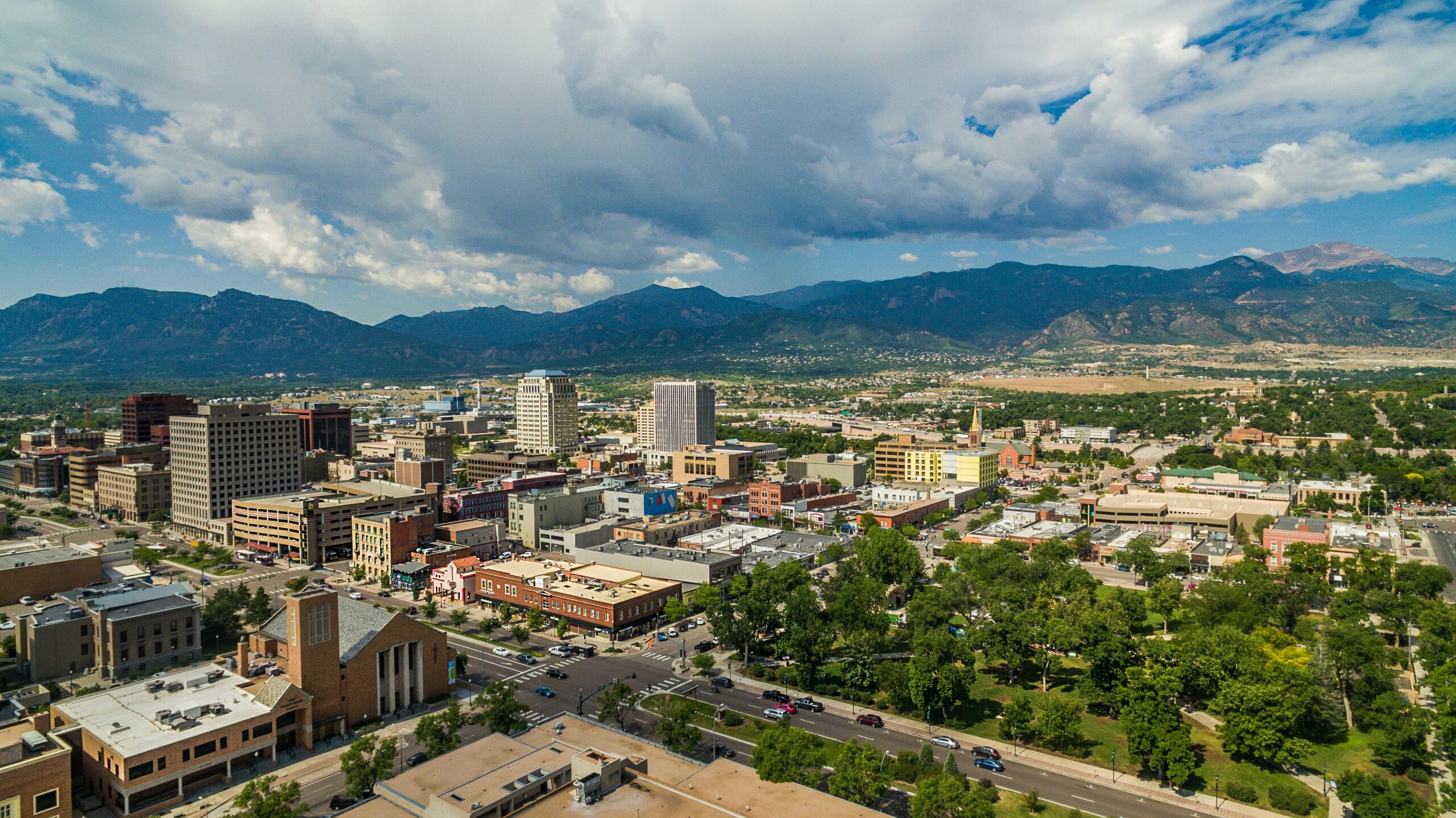Office Sector
The Colorado Springs office market is facing demand challenges. However, as of the first quarter, trailing 12-month absorption bounced back into positive territory, amounting to 160,000 SF. Vacancies have decreased in the past year to 10.2%. Still, the vacancy rate remains near the highest to be recorded dating back to 2014.
To a certain degree, the city is in better shape than most comparable markets and has avoided the worst of the disruption that most other areas are facing due to changing office utilization patterns, and vacancies remain below the national benchmark of 13.9%. With no projects under construction, the market has no supply-side risk in the near term, which should help in keeping vacancies in check. According to CoStar’s Base Case forecast, vacancies in Colorado Springs are projected to remain relatively flat going forward, while national vacancies are projected to continue rising through 2026.
Rent growth is outperforming the national average at about 1.5% positive annual gains, compared with 1.1% rent gains from the national index. However, when adjusting for inflation, real rent growth continues to trend negative.
Colorado Springs is an affordable market and has benefitted as some investors have been priced out of core gateway markets. The city has attracted investors in the pandemic era due to its growing population and highly skilled workforce.
Industrial Sector
Demand in the Colorado Springs industrial market has been steady over the past few years, driven by aerospace, defense, manufacturing, and cybersecurity. The vacancy rate sits at 4.7%, below the national average of 6.9%. Annual net absorption amounted to 240,000 SF. The market has limited supply-pressure with space under construction amounting to 470,000 SF, representing just 1.1% of current inventory.
E-commerce is booming, but retail sales at brick-and-mortar locations have also risen, leading to increased demand for distribution centers across the city where goods can be stored before reaching the consumer. Retailers and logistics providers are increasing their industrial footprints to improve their distribution networks and bulk up on inventories. Tenants have spread out across the market, but East Colorado Springs, near the airport, continues to drive the majority of logistics demand.
While demand has held steady, rent growth has decelerated in the past year to just 0.8%. The pace of rent growth remains below the national annual average
of 2.1%.
Retail Sector
A resilient consumer base, limited construction, and steady leasing activity continues to benefit the Colorado Springs retail market. Retail availability remains low as of the fourth quarter at 5.9%, below the 10-year average of 6.5%. Low availability is beginning to impact leasing activity as tenants face challenges securing the right type of space.
The construction pipeline remains subdued with 230,000 SF underway, representing 0.5% of total inventory. Roughly 40% of this space is available for prelease, which will provide opportunities for tenants looking to expand when most projects deliver in early 2025. However, virtually no projects broke ground in 2024 as developers responded to a high interest rate environment, making many projects financially unfeasible. This is setting the stage for fewer deliveries by the second half of 2025, which will likely result in tightening fundamentals.
The top-performing submarkets in Colorado Springs are those charging the highest rents, and by extension, the submarkets which have the best locations and retail demographics. The Northeast Submarket commands the highest retail rents in the metro by a notable margin, nearly $26/SF. Rent growth in the submarket has continuously outpaced the metro average for over five years.
Colorado Springs Economic Outlook
As of the first quarter of 2025, Colorado Springs is experiencing modest economic growth. The city’s budget projections anticipate slight revenue increases compared to the end-of-year forecasts for 2024. City of Colorado Springs
This growth is supported by a diversified economic base, including military installations, defense contracting, healthcare, software development, and semiconductor manufacturing. City of Colorado Springs
However, the broader state economy is projected to grow at a slower pace amidst uncertainty, with key sectors like trade, transportation, and utilities expecting minimal job additions. University of Colorado Boulder
In the commercial real estate sector, Colorado Springs has maintained steady demand across office, retail, and industrial properties. Despite this stability, the office sector faces challenges, with vacancy rates near historic highs expected to persist. Socodigest
Rent growth has decelerated, particularly in the office market, as tenants continue to reassess their real estate needs. Hoff & Leigh
Nonetheless, the industrial and retail segments show resilience, supported by the city’s diversified economic activities.
Looking ahead, the commercial real estate outlook for Colorado Springs in 2025 is cautiously optimistic. While certain sectors like office spaces may continue to grapple with high vacancy rates, the overall market is expected to benefit from the city’s economic diversification and steady demand in industrial and retail properties. However, potential challenges such as rising interest rates and broader economic uncertainties could influence investment decisions and market dynamics. Stakeholders are advised to monitor these factors closely to navigate the evolving landscape effectively.

